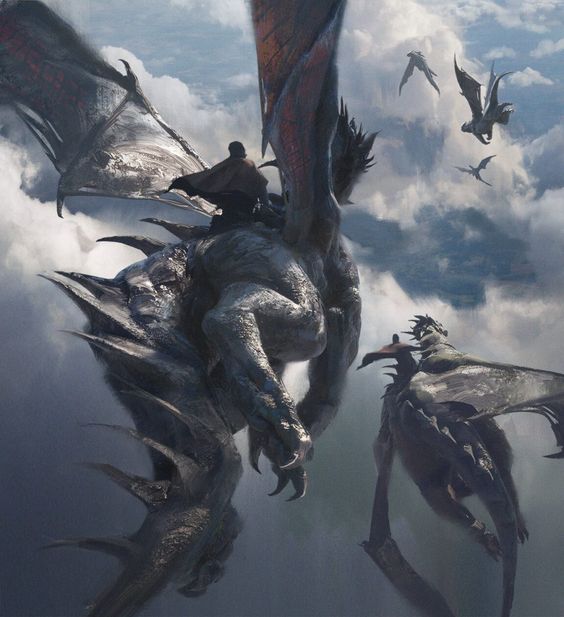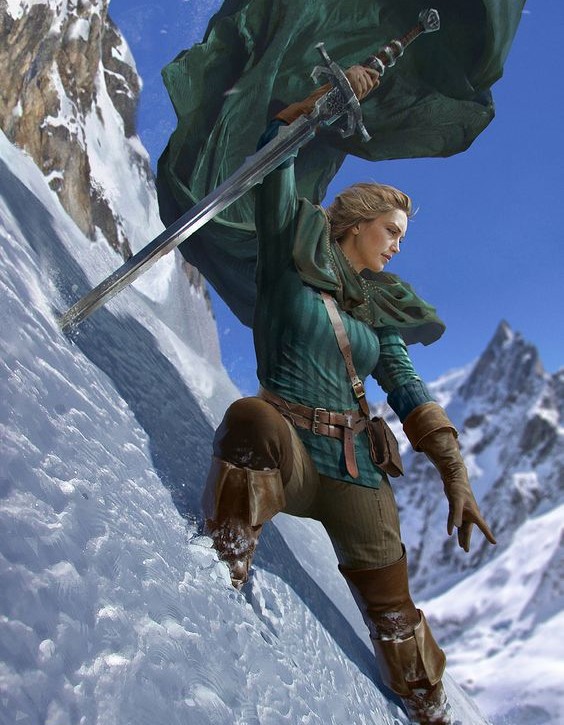Voletaria
King, City, Country
Voletaria is both nation and city, a vast mountain range claimed and guarded by its beating heart, a massive metropolis built at the foot of the Spire. Much of the city itself was crafted from marble and whitestone forming great pillars and domed buildings, open pavilions and massive arenas, and the great walls protecting the mountain and its surrounding valley from any and all intrusion. These walls were so well constructed that they have nary a scratch on their faces, and have been named “Heaven’s Gate” for their indestructible reputation. Entire mountains have been chiseled into monumental temples and castles, bristling with spires of white and gold that dominate the skyline, rising so high that you couldn’t see their peaks if the sky was particularly cloudy. All of these beautiful constructions surround the Spire, a monolithic white marble spire that reaches to the highest points of the heavens. Some say that the Spire once sat in the midst of Karad, but as the Stormlord replaced the Pyrelord as the primary power of the heavens, it naturally moved itself into his domain. Built around the Spire’s base sits the Stormdrake Palace, rivers of pure magical energy cascading from its halls and into the aqueducts of the city below. In only a few centuries, Voletaria would grow to eclipse the creations of immortals and men on the planet’s face, a city of the ancient past that would maintain itself into the future. This was unintentional, however, as its founder never intended on building the largest city in the world. When the Stormlord first founded his city, it was nothing more than a large manor house built on the side of a mountain. Khora had intended on building a home for his five children, separate from the politics and the powers of the world that had caused him to lose his own home originally. When he became the commander of the Sunfyre Legion, however, he needed a place of strength to plan his war from. He began first by reinforcing his manor into a fortress capable of housing his legion and their families safely within, and set his strategists to continue the task of upgrading and expanding their castle. As the Siege of Arvandor began and more and more would flock to Khora’s cause, the castle eventually became a settlement, then a town, and finally a city. In the modern era, there are no better examples of late-empire dratarian architecture left on Thelekar than this, a continuously inhabited city since before recorded history. When Khora became the Stormlord and ended the siege as King of Avandor, he sent celestial architects to preserve the city, ensuring it would last a millenia against the violent weather of the mountain range that would one day be named after him. It has remained home to the children of Khora and their royal dynasties, as well as all those seeking the city out as a place holy to their worship of the Stormstar.United by Faith
Visitors to Voletaria often comment on its diverse range of species and races, a trait that remains rare among the current powers of the world. For peoples like the elves who experience time differently than the rest of mortalkind, or the dwarves who are uniquely designed to survive in the damp, dangerous caves under Thelekar’s surface, it is likely surprising to see a nation, built on the legacy of one man and his descendants, that does not have a majority of one species living within its walls. The Stormlord was venerated by many different groups- his descendants, but also dragonkin, giants, tieflings, beastfolk, elves, and genasi, all forming a greater society from their cooperation, all called Voletarians. The most imposing members of Voletarian society are the dragons and their kin, which are not commonly found anywhere else on the continent. It was Khora’s alliance with Zmaj that brought more scaled wyrms to his cause, those inspired by Silverwing’s bond with this mortal man. Three ancient dragons and their courts joined the city, and thanks to them, the dragonborn population of Voletaria was established. Additionally, as clutches of young drakes were born, they were trained alongside riders to form a defensive force of drakeriders to help defend the city from invaders. Giants and their kin have always been native to the mountainous ranges of Thelekar, and spent nearly three years haggling with Khora and his diplomats over territory permissions and trade agreements. Though Voletaria is often called the only city in the kingdom, there are a number of giantkin castles hidden in the shadows of the mountains as well, though not large enough to properly be called cities. Each one has its own lord with their own constituents, and each one eventually agreed to join the kingdom of Voletaria under the banner of its royal dynasty. The city now has not only a population of goliaths within its walls, but also a small number of true giants that have found lives for themselves within. Though most are cloud and stone giants, a few fire giants have found their way here as well, famous for helping craft the Voletarian army’s impervious armor. Tieflings, beastfolk, and genasi all share a common reason for being so common in the city- alliances. When Khora welcomed Xarkanas and his people into the Sunfyre Legion, the warriors came to live in the castle while many of those too old to fight decided to remain behind in the Bloodhills, eventually forming the Draican Imperium. Those who came to Voletaria were eventually changed by their closeness to divinity, finding their horns and and eyes taking on a gold coloring, as if their infernal mutations were automatically shifting to align more with the celestial influence of the city. More recently, thanks to King Korrigan’s alliance with Holy Lorain, many beastfolk have come to live in the city, primarily those naturally adapted to mountain life such as aarakocra and caprini. Finally, given the amount of storms that violently rock the mountain range, it is common to find those who have been blessed by the storm to become genasi, or even full elementals from the Plane of Air that have found a home within Heaven’s Gate. Voletarians that bear the true blood of Khora are immediately recognizable. Humans with broad shoulders and tall bodies, bright silver hair as if they struck by lightning, and electric blue eyes like the bolts of lightning commonly thrown by their divine ancestor. Their skin is typically dark umber like their Karadian anestors, but centuries of marriages into Aristean or Imperial families has led some clans to include members with different shades of hair and skin as well. King Korrigan Voletaria, for example, does not have the silver hair typically attributed to his people, given the fact that his divine parent did not either.Pilgrims and Sentries
Though the city is constantly maintained by a massive population and numerous ancient orders, the philosophy of the Church of the Storm is one of freedom and nature. One of the FIve Words of the Stormstar is literally “Unburdened”, to be as unrooted as the clouds, casting aside attachments and material possessions. And yet, the city remains a remarkably important place, a bastion of freedom and safety protecting the Spire from outside influences. As a result, two orders of warriors were established to make sure the people of Voletaria could both live the nomadic lifestyle they felt called to, while also showing reverence for this important place: the Pilgrim Guard and the Watchful Sentries. The Pilgrim Guard wander with a number of different Voletarian clans like Stiermut and Falkensicht, protecting those who cannot protect themselves. They repair old and broken roads destroyed by rockslides, tend to blights that spread through forests, and slay beasts that grow too ravenous to remain in their territory. They will often bond to a certain clan for life, many being welcomed into the clans they protect as family. The Watchful Sentries make up the majority of what most consider the Voletarian army, donning heavy armor and towershields and patrolling the city and its surrounding castles. Those without any particularly helpful skills or trades can often find work with the Sentries, as soldiers or attendants. The best of the best eventually get the option to become Drakeriders, the most coveted position in any Voletarian army. These warriors are few in number, but have their names recorded on the obsidian slab in the Hatching Grounds, as well as the name of their scaled companion. Outside of these official Voletarian knightly orders, there are the Storm Apostles. These are warriors from all walks of life that find their faith in the Stormlord, and take an oath to follow him or his tenants. The Stormlord’s champions are most often from this particular group, and while they are required to show no loyalty to the kingdom of Voletaria, a call will be given to gather in times of great need, and hundreds will make a pilgrimage to the city to answer. Though they will not hold status like those within the Pilgrim Guard or Watchful Sentries, they are still a respected class of warrior by the Church of Storms, and will be given food and lodging if it is required. Most often, Storm Apostles begin their journey as Adventurers, and will often maintain that lifestyle and retire in the Holy City when they grow too old.A Kingdom of Clans
Within Voletaria there are not noble houses or a special council of only highborn lords like the Aristean Houses or the Imperial Senate. There are instead a number of clans, each with their own ethos, that work together for the advancement of the kingdom. The oldest and most famous is of course Clan Voletaria, the first royal dynasty that was directly descended from Volker, Khora’s eldest child. Though it bore the name of the patron god, it was not meant to last, eventually ending when Ludwig Voletaria III was assassinated by an unknown enemy in the Second Age. It would eventually be reborn in the Fifth Age, when members of the Stormguard arrived in Voletaria with the infant form of Korrigan, the Stormlord’s own flesh and blood given form in his sixth child. In the millenia that passed between Clan Voletaria’s fall and rise, Clan Eberhardt was chosen to take up the mantle of kings and queens. Descended from Khora’s third child, Adam Eberhardt, Queen Sunna Eberhardt succeeded Ludwig III and managed to fight off an attempted invasion from the Girdellan Empire, a battle which originally birthed the nickname of Heaven’s Gate for Voletaria’s walls. In addition to Voletaria and Eberhardt, the primary clans of the city are Katzengade, Luxenklinge, and Widderstärke, each one encompassing about a dozen other clans that all rely on their primary family line for organization and funds. Many clans also stick purely to the nomadic life, like the clans of Stiermut and Falkensicht, uninterested in helping run the day-to-day city life. Instead, they are primarily traders, merchant clans who will travel to many different trading hubs along Voletarian borders to transport goods back and forth through the treacherous mountain ranges. The storms make it incredibly hard for airships to pass without a direct blessing from very high ranking clerics of the Church of Storms, so this is the only reliable way for goods and letters to make it to the Holy City.Muros Nostros Frange
Founding Date
Before the Sundering
Demonym
Voletarian
Leader
Ruling Organization
Founders
Government System
Monarchy, Theocratic
Economic System
Gift economy
Deities
Neighboring Nations
Notable Members
Related Ethnicities





Comments